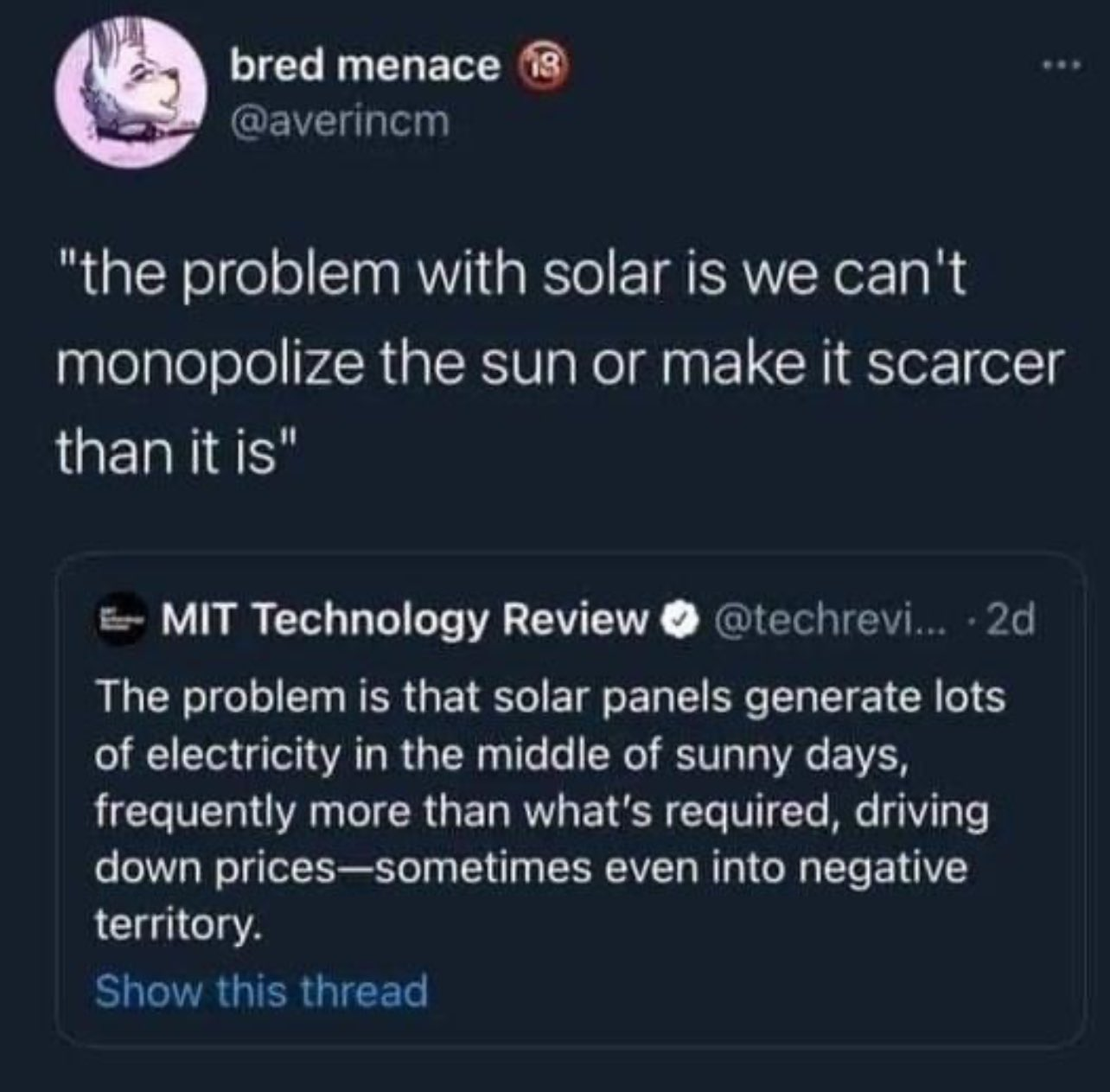this post was submitted on 02 Oct 2024
1701 points (95.6% liked)
Microblog Memes
7603 readers
2996 users here now
A place to share screenshots of Microblog posts, whether from Mastodon, tumblr, ~~Twitter~~ X, KBin, Threads or elsewhere.
Created as an evolution of White People Twitter and other tweet-capture subreddits.
Rules:
- Please put at least one word relevant to the post in the post title.
- Be nice.
- No advertising, brand promotion or guerilla marketing.
- Posters are encouraged to link to the toot or tweet etc in the description of posts.
Related communities:
founded 2 years ago
MODERATORS
you are viewing a single comment's thread
view the rest of the comments
view the rest of the comments

I’m adjacent to this problem, so I have a little context, but am not an expert at all.
To my knowledge, we don’t have granular control over panels. So we can shut off legs of a plant, but that’s a lot of power to be moving all at once.
Instead, prices are set to encourage commercial customers to intake more power incrementally. This has a smoother result on the grid, less chance of destabilizing.
A customer like a data center could wait to perform defragmentation or a backup or something until the price of power hits a cheap or negative number.
Thanks that’s helpful.
But right…?
Solar plants can be reduced to rationalize supply.
To my understanding. The bigger issue is you can’t as effectively do this with other non-renewables like coal/gas… so this not a solar problem but a problem of legacy power plants.
So stupid. The narrative as well.
Yea, more control over the panels will help with the overgeneration issue.
But there’s other issues like ramping supply to meet peak demand and general generation during non-solar hours that still have to be addressed.
Each have interesting proposals on how to solve them, but they haven’t been developed to the point that they’re ready to be put onto the grid at a large scale.